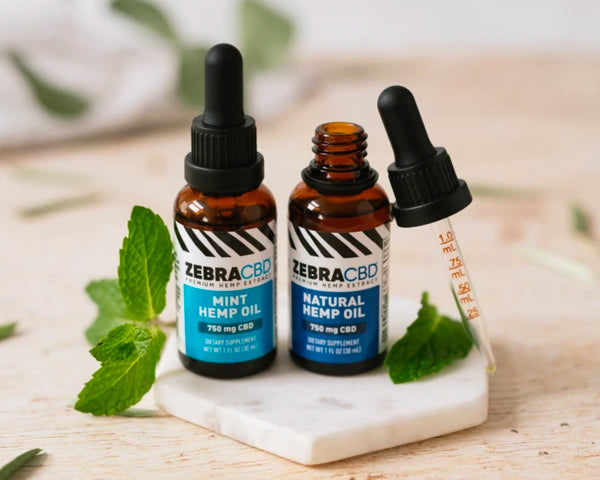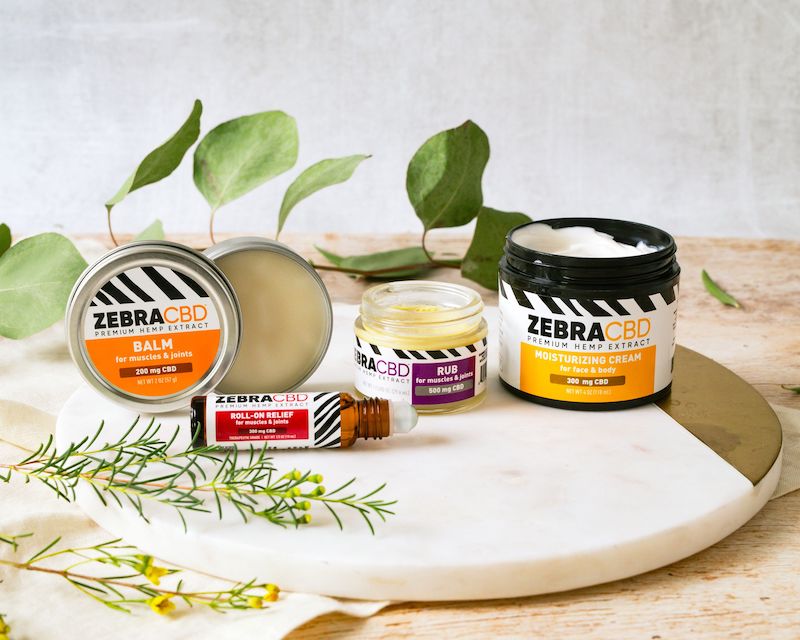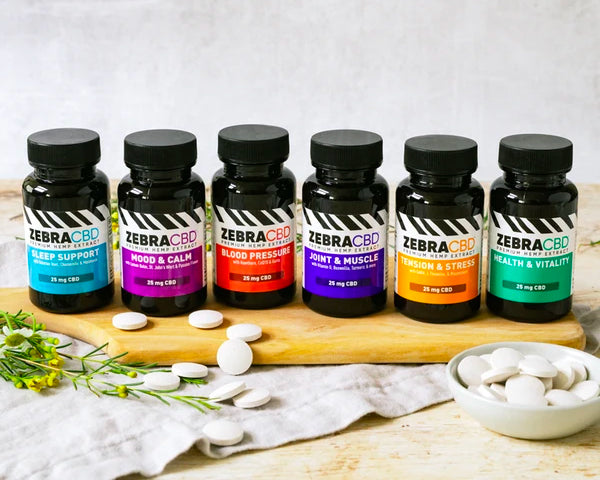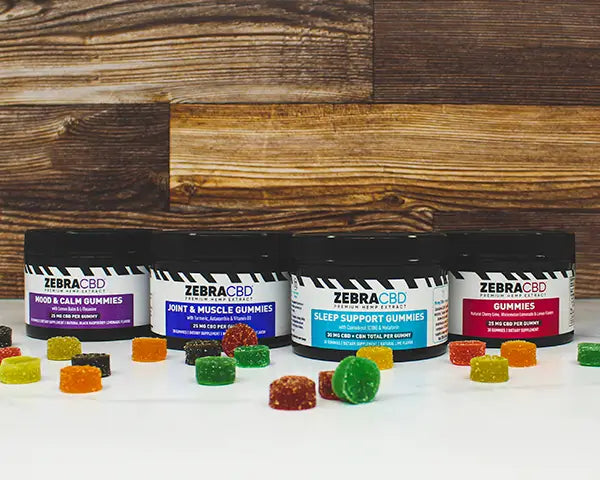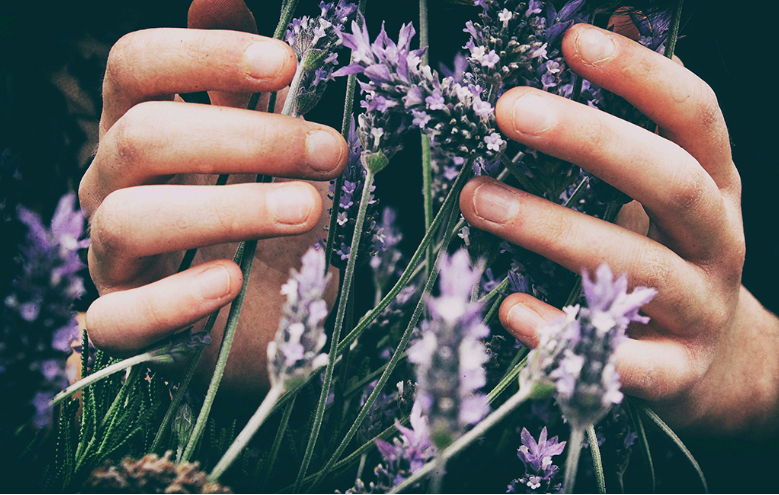
Every day, people around the world use the power of scent to soothe their bodies and improve their health with a practice known as aromatherapy. Aromatherapy can balance emotions, soothe nervousness, release tension and even calm body aches.
Essential oils are one of the most common tools used in aromatherapy. Not only are they readily available in most markets, but they’re also easy to implement into your everyday routine.
In this essential oils guide, we’ll dive into the science behind aromatherapy, teach you how to get the most out of your essential oils and explore the combination of aromatherapy and CBD for an otherworldly level of relaxation and therapeutic benefits.
Basics of Essential Oils
The making of an essential oil starts with a plant. Depending on what part of the plant produces its scent, crafters harvest the bark, leaves, flowers, fruit, roots or seeds. They then put these plant parts through an extraction process, and the resulting product is the essential oil.
Essential oils are prized for their positive impact on the body. Some studies suggest that they have:
- Anti-inflammatory properties
- The ability to modulate the body’s immune response
- Antimicrobial qualities
Each essential oil suits a different purpose, so it’s smart to switch up your use depending on what you’re working to improve. Additionally, creating a blend of essential oils can be a potent way to harness multiple benefits simultaneously, allowing you to tailor the therapeutic properties to meet your specific wellness needs.
The Science Behind Aromatherapy
Aromatherapy uses essential oils to trigger certain physical responses. For example, lavender oil’s calming floral scent helps with relaxation. Peppermint oil, on the other hand, can provide energy after a hard and tiring day.
The practice of using essential oils in aromatherapy dates back thousands of years. In aromatherapy, you apply oils to the body, to an object like a towel or pillowcase or into diffusers that spread the scent through a room.
When inhaled, the scent molecules travel from olfactory nerves in the nose directly to the brain. They then interact with the amygdala — the brain’s emotional control center.
Other reported potential benefits of aromatherapy include:
- Improvement of memory
- Better sleep
- Alleviation of nervousness and low mood
On the whole, aromatherapy can do your body and mind good. But how do you get the most out of your oils?
How to Use Essential Oils
In this part of our essential oils guide, you’ll learn three methods for applying your essential oils.
Topically
It’s important to note that you aren’t meant to use essential oils directly on your skin. Instead, add a few drops to your beauty products, like a night cream or serum. You can also dilute them with a carrier oil like jojoba or coconut oil. This protects you from skin irritation and allows for an even, easy application.
Just note that oils do have pore-clogging traits. If you have oily skin, take care with this approach. To discover the best essential oils for your skin, read our other guide for valuable tips to ensure you’re incorporating the right oils into your morning or night skin care routine.
Internally
You can’t take every essential oil by mouth, but for some, you can. Make sure your essential oil of choice is labeled “for internal use.” If it is, you can safely add it to drinks or foods. You can even take them as a dietary supplement in capsule form.
Aromatically
Diffusion is one of the most popular methods of enjoying essential oils. Simply buy a diffuser or atomizer to place your oils in, then allow the essential oil diffuser to heat up and spread the scent throughout your room.
Tips for Getting the Most from Your Essential Oils
Aromatherapy isn’t just about lighting a scented candle or pouring oil into a diffuser and calling it a day. Small and seemingly unimportant nuances can make a world of difference to your experience.
To that end, here are some tips for getting the most out of your essential oils.
Store Your Product Properly
Essential oils have an expiration date — most only last six to twelve months. Storing your oils in a cool, dark and dry place helps maximize their longevity.
Also, keep your bottles tightly sealed, as certain essential oils — like spruce and pine — become skin irritants when they oxidize.
Buy High Quality
Because essential oils aren’t regulated in the United States, you have to keep an eye on your product’s quality. Look for essential oils that include the plant’s Latin name, an oil purity statement, no synthetic ingredients and information about the plant’s harvest.
Do a Test Patch
Always do a patch test when applying any new product to your skin to check for allergic reactions. Here’s how: mix a small amount of your essential oil with your carrier oil at twice the concentration you intend to use it. Next, apply that to a small area on your forearm. Keep it covered with medical gauze and let it sit for 24 hours.
Use Carrier Oils
Carrier oils let you dilute essential oils into a more gentle and tolerable form. Most essential oils are highly concentrated and will irritate your skin when applied directly. Common carrier oils include avocado, apricot kernel, grapeseed, and/or sweet almond oil.
Avoid Photosensitive Oils In the Sun
Some oils are photosensitive, meaning they react to the ultraviolet rays in sunlight. This can cause skin irritation redness, itching, discoloration and even blistering. Citrus oils are notorious for this, especially angelica, orange, bergamot, lime, and lemon essential oils. To protect yourself, wear long pants and sleeves and/or apply the oil at least 12 hours before sun exposure.
Keep Away from Kids and Pets
Essential oils are natural, but that doesn’t make them safe. Always keep your essential oils away from curious hands and paws.
Talk To Professionals
Last but not least, consult your healthcare provider or work with a certified aromatherapist before you give aromatherapy a try. Not all oils are safe for everyone to use. For example, if you have a fast heartbeat, you shouldn’t use peppermint oil since it can make you more nervous.
Combining CBD with Aromatherapy
CBD is a cannabinoid in marijuana, and it’s responsible for effects like:
- Full body relaxation, i.e. the “body high”
- Reduction in feelings of nervousness
- A sense of peace and calm
When you enjoy CBD, it’s best to do so in a comfortable, relaxing environment. Diffusing essential oils into the air can help you create a space where you can truly unwind. Additionally, combining CBD and aromatherapy can help you maximize the benefits of each. To fully understand why combining CBD with essential oils enhances relaxation and well-being, explore our detailed guide on the top CBD oil benefits.
For instance, if you want to achieve a more restful sleep, take your CBD product of choice one to two hours before bed. Then, diffuse a peaceful, chamomile, sweet basil, or lavender essential oil in your bedroom. Set your bed up in the coziest way, tuck yourself in and get ready to ease into a restful slumber.
Hit Peak Relaxation with Zebra CBD
If you’re interested in experiencing the plentiful benefits of combining aromatherapy and CBD, there is Zebra CBD. We’re your trusted CBD online experts, carrying everything from CBD oils to CBD topicals and CBD gummies for sale. Plus, all of our products come with a Certificate of Analysis that confirms you’re only receiving safe, natural and high-quality CBD.
Relax with Zebra CBD.
Source:
- Young Living. Essential oils 101: Beginner’s guide. https://www.youngliving.com/blog/essential-oils-101-beginners-guide/
- Everyday Health. Essential Oil Dos and Don’ts: Aromatherapy Tips for Beginners. https://www.everydayhealth.com/wellness/essential-oil-dos-and-donts-aromatherapy-tips-for-beginners/
- Forbes. Your Essential Guide To Essential Oils. https://www.forbes.com/sites/nomanazish/2021/08/31/your-essential-guide-to-essential-oils/
- Scientific American. Do Essential Oils Work? Here’s What Science Says. https://www.scientificamerican.com/article/do-essential-oils-work-heres-what-science-says/

